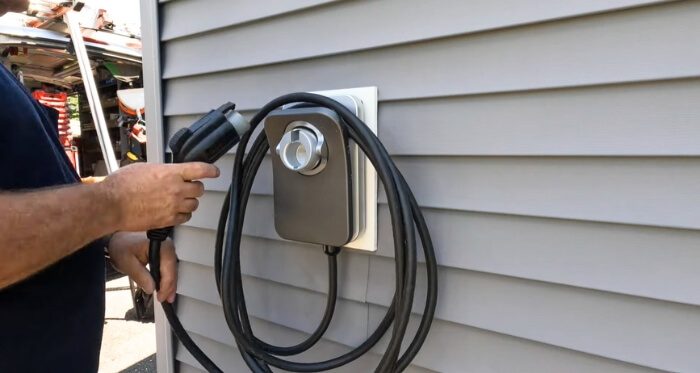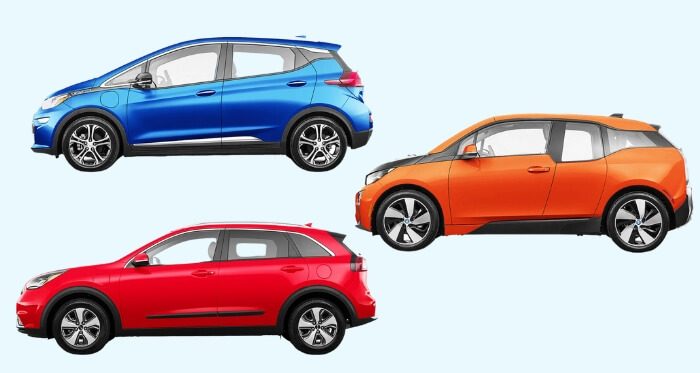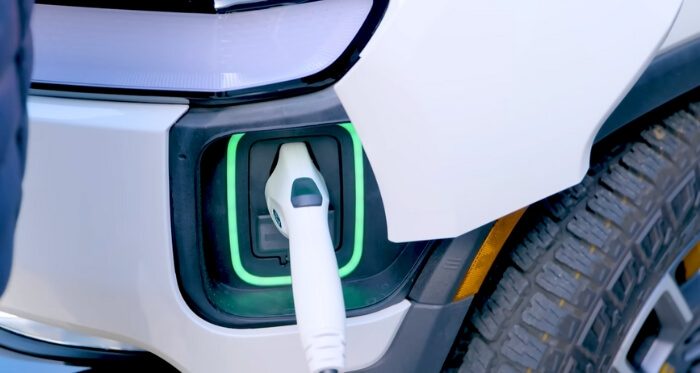Electric vehicles are a new horizon of transport. They are changing the perspective of the modern transport system. The patent was discovered in the last century but due to the policies of worldwide different govt and investors, it wasn’t implicated until the last decades. Elon Musk dedicated his brand to the founder of the patent Nikola Tesla.
In Bangladesh, the E3W or electric 3-wheelers have been on the road since 2010. However, the Govt. of Bangladesh decided on their concern in 2019. Since then it has been a smooth journey. However, new users of EVs in Bangladesh have a common concern. That is, Can electric cars be charged at home?
Yes, it is possible. Crackplatoon CSL offers home EV charging stations for EV users in Bangladesh. Their model AMITI21 AC Type EV charger is specifically designed for home EV charging.
Interesting! Isn’t it? Now, we’ll dive into the details of home EV charging in Bangladesh, exploring the various options, benefits, and considerations that come with this exciting shift. So, let’s plug in and discover the future of at-home EV charging in Bangladesh!
The Basics of EV Charging In Bangladesh
A fundamental aspect for EV owners is the charging methods of their EVs. Which involves refilling the car’s battery with electricity, like refueling a traditional vehicle with gasoline. While it may seem complex, the basics of EV charging in Bangladesh are quite straightforward.
There are typically two main options: private or home charging and public charging. Home charging involves using a dedicated charger installed at your residence, offering the convenience of overnight charging.
Public EV charging stations in Bangladesh are located in various places like shopping centers and highways, providing on-the-go charging for those longer journeys. To ensure a smooth and efficient EV ownership experience knowing these charging options is key for EV owners.
Can Electric Cars Be Charged at Home?
Yes, indeed! Charging an electric vehicle (EV) in the comfort of your own home is not only possible but also highly practical. There are two main types of charging stations suitable for home use, each offering distinct advantages.

In Bangladesh, Crackplatoon is providing home charging stations for EV owners of this region. Their AMITI21 AC Type EV charger is designed for home charging. They support type 1 and type 2 connectors. Their power range is between 7-22 kWh.
So, if the question is, can electric cars be charged at home, bothering you?. Here we are to briefly explain the matter. Now we will dive into the types of charging stations that are suitable for homes for you to get proper insights.
Standard Electrical Outlet
Most electric cars come with a Level 1 charger that can be plugged into a standard 120-volt household outlet. While this method is the slowest, it’s suitable for overnight charging, providing about 2-5 miles of range per hour. It’s a convenient option for daily commuting when you have ample time to charge at home.
Level 2 Charging Station
Installing a Level 2 charging station at home offers faster charging, typically providing 10-60 miles of range per hour, depending on the charger’s power output. These stations require professional installation, but they’re ideal for quicker replenishment.
Crackplatoon CSl also provides level 2 charging stations for EV owners in Bangladesh. Their MIHIR52 AC Type EV charger is designed as a level 2 charging station. They support type 1, type 2, and GB/T connectors. Their power range is between 7-43 kWh for a single outlet and 86- 142 kWh for a double outlet.
Especially if you have a higher-capacity battery or need to charge multiple EVs. Dedicated Level 2 chargers are a popular choice for those looking to maximize the convenience of at-home charging.
How to Install a Home Charging Station?
It is a significant step to install a home charging station for EVs. This creates the chances for more renewable energy use and also for a future green environment. While the process may seem complex, breaking it down into manageable steps makes it easier. Here’s a step-by-step guide to help you through the installation process.

Step 1: Assess Your Electrical System
Evaluate your home’s electrical system to ensure compatibility with the charging station. Then, consult with a certified electrician to check your electrical panel’s capacity and the need for any upgrades. It is a crucial step for ensuring safety and compatibility.
Step 2: Choose the Right Charger
Choose the right charger that matches your vehicle’s requirements and your charging speed preferences. There are different levels of chargers available, with Level 2 chargers being the most common for home use. Choose Crackplatoon csl EV charging in Bangladesh for level 2 chargers for a qualitative EV Charger.
Step 3: Obtain Necessary Permits
The next step is to check the local authority for permission to set up the charging station. Their requirements vary by location, so it’s essential to comply with local codes and regulations. This might also involve an inspection of the installation site.
Step 4: Select a Suitable Location
Choose an accessible and convenient location for your charging station. It should be close to where you usually park your EV and within reach of the charger’s cable. Also, consider factors like exposure to elements and the possibility of future changes to your parking arrangements.
Step 5: Installation by a Professional
A professional installation is required for charging stations. Hire a qualified electrician to install the charger. It will ensure the charging station is correctly and safely set up according to electrical codes.
They will connect the charger to your home’s electrical system and test it for proper operation. In Bangladesh, Crackplatoon CSL provides technical support to install EV chargers. Communicate with them for better service experiences.
Step 6: Final Inspection
When it is all set and done, a final inspection may be required by your local municipality. They will check whether the connections meet all safety criteria. While meeting their criteria they will approve the connections. Then, test the charging station with your EV to confirm it’s working correctly.
By following these steps, you can successfully install a home charging station and enjoy the convenience of charging your electric vehicle at home.
The Types of EVs Suitable for Home Charging
It is a revolution ongoing in the transportation sector with the arrival of EVs. Which is offering a greener alternative to traditional gasoline-powered cars. With the rise of home charging solutions, EV owners can now enjoy the convenience of EV charging their vehicles right at their doorstep. This guide explores the different types of EVs suitable for home charging, highlighting their unique features and compatibility.

Battery Electric Vehicles (BEVs)
The only electric vehicles with no alternative methods within them are BEVs. They are highly compatible with home charging stations, as they rely solely on electricity. A typical EV charger supplier in Bangladesh would suggest a Level 2 charger for these cars.
These vehicles don’t produce tailpipe emissions, which makes them an eco-friendly choice. Home charging is particularly suited for BEVs, as their range and battery capacity are designed to maximize the benefits of residential charging setups.
Plug-In Hybrid Electric Vehicles (PHEVs)
The PHEVs are also compatible with the home charging method. While they have an electric motor with a traditional internal combustion engine. Their battery is smaller than the BEVs. Most PHEVs can be fully charged overnight using a standard home charging station.
The flexibility of PHEVs lies in their dual fueling options. When the battery depletes, the gasoline engine kicks in, eliminating range anxiety. Home charging for PHEVs reduces reliance on gasoline and lowers overall emissions.
Extended-Range Electric Vehicles (EREVs)
A subset of PHEVs is EREVs, which feature a larger battery and a smaller gasoline engine. These vehicles primarily run on electric power, with the engine acting as a generator for an extended range. They can be charged with a home charging station, which ensures the electric motor’s predominant use.
They offer an excellent balance for drivers not ready to fully commit to a BEV. They provide a longer electric-only range, making them ideal for regular home charging. Experts often recommend EREVs to those transitioning from traditional cars.
These are the compatible EVs with the home charging stations. The owners of these kinds of EVs can set up a home charging station for smooth and reliable charging.
The Methods of Charging the EV at Home
Some of the doubts are about the efficiency of home charging for their EVs. While this is not the actual scenario, EV charging at home is not just about convenience; it’s about optimizing your EV’s performance and longevity.

This process offers a variety of methods, each catering to different needs and setups. It is possible to understand these methods for ensuring to get the most out of your EV’s charging. Here are the methods briefly explained.
Level 1 Charging
This method uses a standard household electrical outlet, requiring no special installation. It’s the slowest charging method, typically adding about 3 to 5 miles of range per hour. It is recommended by experts for overnight charging of plug-in hybrids or as a secondary option with this method.
Crackplatoon Csl offers level 1 charging stations in Bangladesh. One of the leading service providers has the model AMITI21-AC TYPE, which fulfills all criteria for being a level 1 charger.
Level 2 Charging
The most common home charging solution is level 2 charging. It requires a 240-volt outlet and can add about 12 to 80 miles of range per hour. This method is slightly faster than level 1 charging. Crackplatoon Csl Bangladesh also offers a level 2 charging station.
Solar Charging
This method involves installing solar panels and a converter to power your EV charger. They are ideal for environmentally conscious drivers and can offer significant savings over time.
Each charging method presents its own set of benefits, tailored to different lifestyles and EV models. By choosing the right method, you can enhance your EV experience, balancing efficiency, convenience, and sustainability.
Final Thought
Our exploration into the world of electric vehicles (EVs) reveals a crucial aspect of modern sustainable living. Starting with the query “Can electric cars be charged at home?”, we unearthed that not only is home charging possible, but it also presents a blend of convenience and environmental care.
The leading service provider in Bangladesh is Crackplatoon CSL. They have both Level 1 chargers and Level 2 chargers, offering a practical solution for EV owners. The installation process involves understanding your vehicle’s needs, choosing the right equipment, and potentially upgrading your home’s electrical infrastructure.
However, it’s essential to acknowledge the limitations, such as slower charging speeds compared to public stations and the need for a suitable home setup. As the world gravitates towards greener transportation, the ability to charge EVs at home marks a significant stride in this journey, highlighting the synergy between technological advancement and sustainable living practices.
